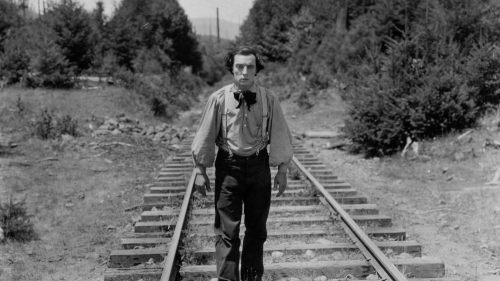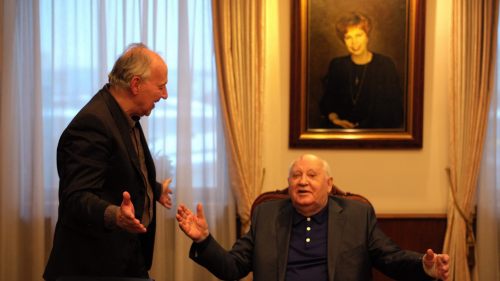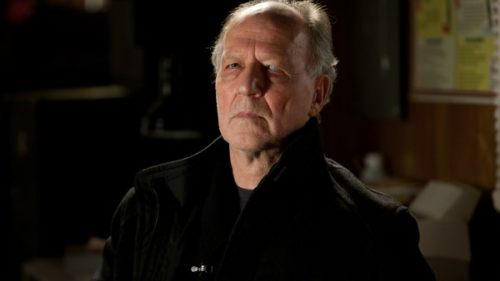Werner Herzog’s NOSFERATU: THE VAMPYRE Forty Years Later
Celebrating forty years, Herzog’s remake of F.W. Murnau’s iconic silent classic is a relevant examination of death. Focusing on a wave of the pestilence that wipes out scores of a small town in the Netherlands, the film serves as a witness to the end of humanity. Borrowing the allegory of vampirism as an external force and a harbinger of annihilation, Herzog focuses on the incremental power of the natural world and the relative fragility of the human body. The film opens with documentary images of the mummies of Guanajuato, Mexico. The faces of mummified children with brown leather skin and hallowed cheeks are contorted in silent faded screams. The camera moves to examine the details of twisted bodies, wrinkled skin and intertwined fingers. Enshrined in death, these bodies are burdened with a perverted immortality.
Inspired by Bram Stoker’s Dracula, Nosferatu is the story of Jonathan Harker, a real-estate agent, who travels to Transylvania in order to sell property to the reclusive Count Dracula. In spite of multiple warnings from villagers, he pushes on and finds himself imprisoned in a series of endless nights where his life-force seems to be slowly drained. Left on the brink of death as Nosferatu travels towards his home, Jonathan finds the strength to return home and save his wife, Lucy.
Herzog seems to shoot the domestic scenes between Lucy and Jonathan through a white gauze as light appears to improbably glow in their beautiful clean home. Rather than romantic, the film treats this love affair ironically. Through excessive performances and a somewhat distant camera, we are not drawn into the sweeping emotions of their love. While for them, their romance feels like an antidote to the evils of the world, it is egotistic to believe that love can transcend the certainty of death.
As Nosferatu arrives in their home town, he brings thousands of rats with him. Pale, red-eyed creatures soon cover every available surface. Fearless and hungry, they carry the plague, and death descends into this corner of Europe. Bodies accumulate quickly and soon most of the town is gone. As the sound of human life dies down, the endless squeaks and rustling of rodents take over. The world no longer belongs to humankind and has been returned to the animals.
In one of the greatest sequences in any Herzog film, a family infected with the plague set up a final buffet in the square. Along with the rats, all sorts of animals have already taken back this space. Giant pigs wander and goats prance, barely paying attention to the sallow, celebrating family. From one instant to the next, we watch them assemble for a final meal and witness the silent aftermath as the hoard of rats eat their leftovers.
True to the original text, disease is at the forefront of humanity’s demise in Nosferatu. Even the film’s opening shots carry more meaning than just a creepy set-piece. The naturally mummified bodies of Guanajuato were a result of a Cholera outbreak in 1833, offering another visual representation of human’s fragility in face of disease or death. Though epidemics of these kinds in Europe were fading by the time that Herzog made the film in the late 1970s, it does seem like a realistic vision for the end of human times.
In one sequence, Lucy discusses the certainty of death. Talking of the natural world, she says, “The rivers run without us.” Rewatching this film in 2019, it’s easy to connect the film to current environmental fears. While Herzog’s vision of an epidemic may seem like an element of a distant past, with rising climate disasters scientists have argued that climate change can
potentially lead to new deadly diseases and infections. In the Western world we’ve largely distanced ourselves from death, pushed it into the shadows, but there is no guarantee that willful ignorance of the human condition is sustainable.
With the looming fears of an impending environmental apocalypse, Lucy’s wide-eyed fear as she describes a natural world that will outlive humanity is increasingly a fantasy. Will the rivers continue to flow without us, or will we leave a burned up tundra in our wake?
As Nosferatu, the white-skinned two-toothed monster, Klaus Kinski is solemn as he creates a kind of otherworldly nobility. Faced with this hunched shadow, it’s understandable that Jonathan seemed taken aback. More so than fear though, Jonathan’s expression reads as repulsion. He seems reluctant to even look upon his host. Before Nosferatu reveals his taste for blood and his powers, Jonathan fears him as a clear embodiment of death and decay. But Nosferatu’s curse is not death, but life.
Like the frozen and dried mummies that open the film, Nosferatu is reluctantly immortal. It is only instinct that keeps him going. In his expression and movements he’s lost the will to live. Compared to the strong and almost zombie-like incarnation of death from Murnau’s original, Kinski plays it comparatively small and full of deep melancholia. When he admires Jonathan and Lucy’s relationship, it is more than blood-lust that motivates him. He yearns deeply for the love they have. Love, it seems, can only exist in the finite world of mortality.
Things come full circle with Nosferatu’s deep and harrowing gaze. Without death, there is no love and without love, there is no reason to live. The horror of death is what gives life meaning. While somber and cynical, Herzog’s film also reveals the beauty of life and the importance of love. We might not be able to escape death but that only makes the life we have worth living.



